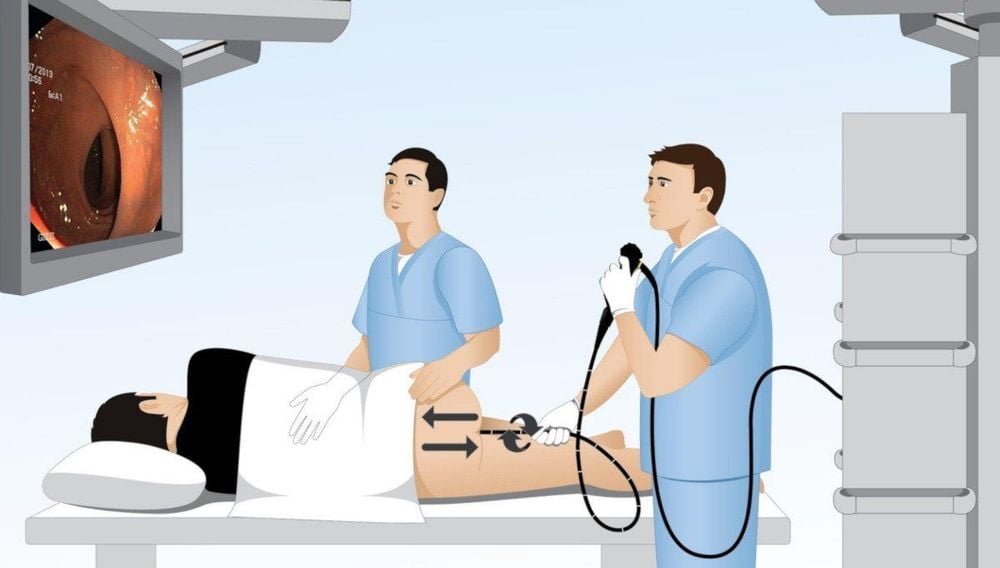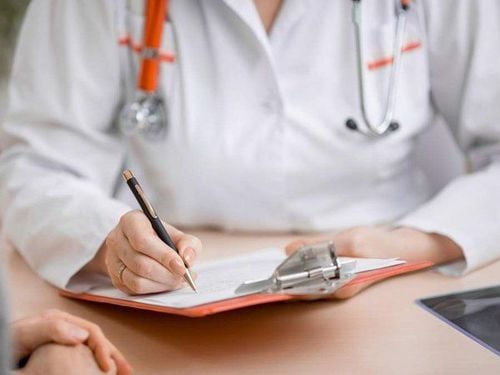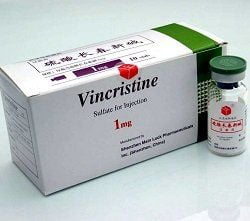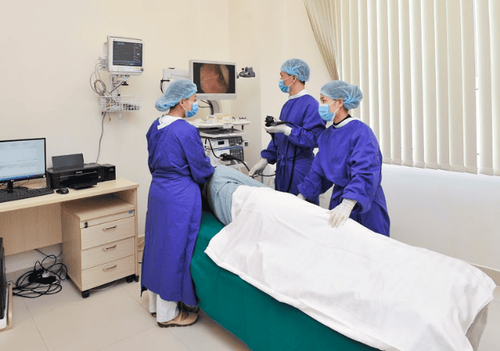This is an automatically translated article.
The article is professionally consulted by Master, Doctor Dang Xuan Cuong - Emergency Resuscitation Department - Vinmec Hai Phong International General Hospital.Rectal endoscopy is an essential technique to help diagnose diseases related to the digestive system quickly, accurately and with the safest and most effective treatment. One of the problems many people are afraid of is bleeding or complications after colonoscopy.
1. What is rectal endoscopy?
Rectal endoscopy is a method that uses a flexible endoscope with a fingertip small camera (about 1cm) inserted into the colon from the anus to the cecum and terminal ileum for direct examination and diagnosis. colorectal disease. By observing the images on the colonoscope, the doctor can see the abnormalities that are happening inside the rectum, thereby making an appropriate diagnosis and treatment.
2. Frequently asked questions about colonoscopy
Is colonoscopy painful? Is rectal endoscopy painful is a question that many patients are interested in because the common psychology of people when examining is fear of pain. In fact, the rectum is long and angled or twisted in some places, so it may be unfamiliar to the patient. However, combined with the soft endoscope and the doctor's experienced expertise, the rectal endoscopy process will take place as gently as possible, minimizing discomfort for the patient. Therefore, the patient should rest assured and let the spirit be most comfortable.
Complications after rectal endoscopy In general, colonoscopy is considered a fairly safe procedure and almost does not cause any serious complications after rectal endoscopy for patients. However, in some cases, colonoscopy can still have the following complications:
Feeling of fullness in the abdomen after the colonoscopy (because the doctor inflates air into the intestine to clearly see the location and extent of the damage). Patients do not need to worry too much because this feeling will disappear quickly after a few farts. Feeling of discomfort and mild pain in the abdomen (usually disappears after about 2 hours). Patients may experience bleeding after colonoscopy if during the colonoscopy, the doctor finds abnormal signs in the rectum and conducts a biopsy to check. This condition occurs quite commonly, only lasts from the first 1-2 days after the scan, so the patient does not need to be too worried. Although extremely rare, intestinal perforation can also occur due to a torsion of the colon or from severe inflammation that thins the bowel wall. In this case, the patient will be monitored, treated medically or surgically sutured the perforation.

Cảm giác đầy bụng sau nội soi trực tràng
3. Colonoscopy procedure
Before laparoscopy, the patient will have a preliminary examination of the anus to assess for external lesions, if any. The doctor may apply a little anesthetic or inject a sedative or muscle relaxant to make the patient less uncomfortable when the bronchoscope is inserted.Step 1: The patient is instructed to lie on the left side or supine
Step 2: The flexible bronchoscope is inserted through the anus into the rectum and then gently to the cecum (the position of the small intestine adjacent to the colon). During the retraction of the colonoscope, the doctor will carefully examine the entire lining of the colon. As the scope passes through the flexures of the colon, the patient may experience abdominal distension, discomfort, or mild abdominal distension.
Step 3: Occasionally the patient will be asked to change position or the doctor will gently press on the patient's abdomen to make the laparoscope easier and less painful.
The entire colonoscopy process lasts from 15 to 30 minutes (or longer if the patient needs a biopsy, rectal polyp removal,...).
For patients with a history of previous pelvic surgery causing intestinal adhesions, laparoscopic anesthesia should be performed.

Quy trình nội soi trực tràng
4. Notes after colonoscopy
After colonoscopy, the patient should also pay attention to the following issues to ensure safety and know how to handle complications when needed:The patient should rest for a short time (1-2 hours) before going out. After returning home, wait until the discomfort in the abdomen is gone and monitor your health to prevent complications after endoscopy (fever, dizziness, severe pain...). Some patients will feel a dull pain in the abdomen, abdominal distention, feeling strained but unable to have a bowel movement... these are all very natural reactions after endoscopy and will disappear in the next 1 or 2 days. . If the patient feels severe abdominal pain, prolonged bloody stools, vomiting blood, etc., it is necessary to immediately notify the doctor to determine the cause, thereby taking timely measures to prevent and control undesirable complications affecting health in the future. However, cases like this rarely happen because only when the conditions of doctor's skills, endoscopic techniques, procedures or sterile conditions are not guaranteed, can the patient be turned into complications. symptoms after rectal endoscopy. If the patient undergoes a biopsy, it is advisable to obtain the biopsy results early and on time as it is important for an accurate diagnosis.

Sau khi nội soi trực tràng, người bệnh nên gặp bác sĩ khi thấy biểu hiện bất thường
Please dial HOTLINE for more information or register for an appointment HERE. Download MyVinmec app to make appointments faster and to manage your bookings easily.













